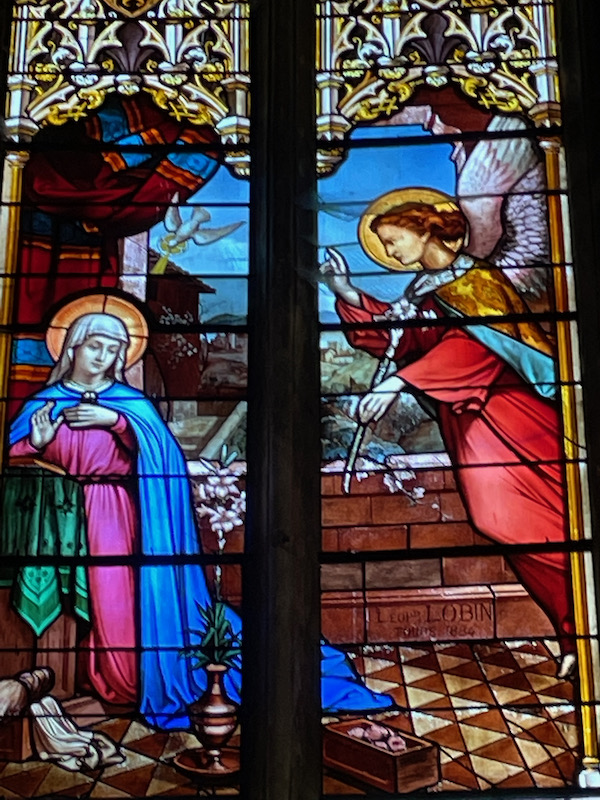Our Blog - Loire Valley Trip - Angoulême, France
Angoulême sits on a plateau and while there was a town here during the Roman Empire, it wasn't located on any major Roman roads and no Roman monuments have been found so most historians don't believe that it was a Roman town. There was a battle in 508 when Clovis sieged the town, which was held by the Visigoths at that time. During the battle, Clovis was seriously wounded in the leg, most likely a fracture. On a wall of a 2nd century tower, there is a leg carved on it called the "leg of Clovis". It is known for paper-making and printing, which started there in the 14th century.
A bit of trivia: The 2021 Wes Anderson film, The French Dispatch of the Liberty, Kansas Evening Sun (or simply The French Dispatch), was filmed in Angoulême.
A first cathedral was built in the 4th century on the site of a primitive, pre-Christian sanctuary. It was destroyed when the town was taken by Clovis in 507. Another cathedral was consecrated in 560, but set on fire by the Vikings/Normans two centuries later. A third cathedral was then constructed in 1017 but by the 12th century, it was considered too small and a new church was built and finished in 1128. This new 12th-century cathedral is dedicated to Saint Peter and was designed in the Romanesque style. It has undergone frequent changes and restorations since it was built. For example, one of the bell towers was destroyed during the Wars of Religion in the 16th century, and the two towers with conical tops were added in 1866-1885. The façade, which remains mostly medieval, is decorated by over 70 sculptures. They are organized into two decorative themes, the Ascension and the Last Judgement, which are cleverly intermingled. In addition to these two main subjects, the sculptors portrayed scenes of everyday life, such as hunting, not avoiding to underline hardships and painstaking labor.
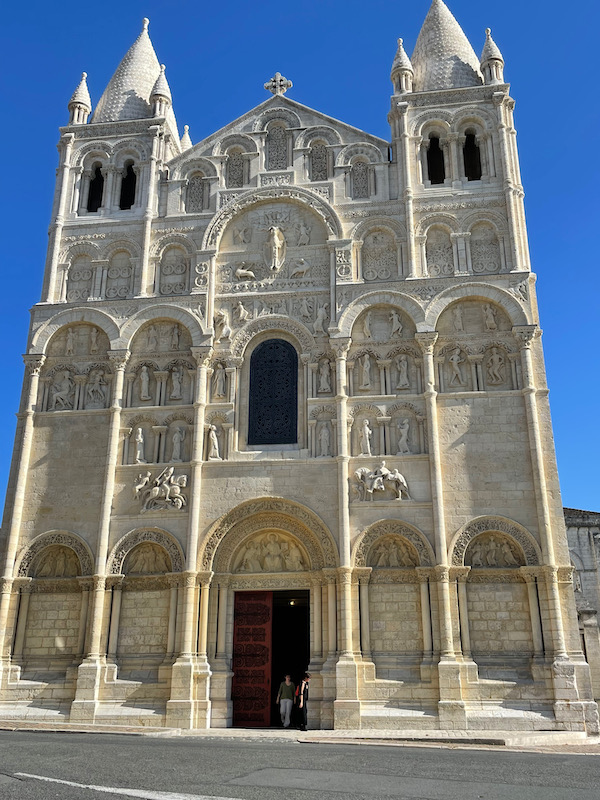
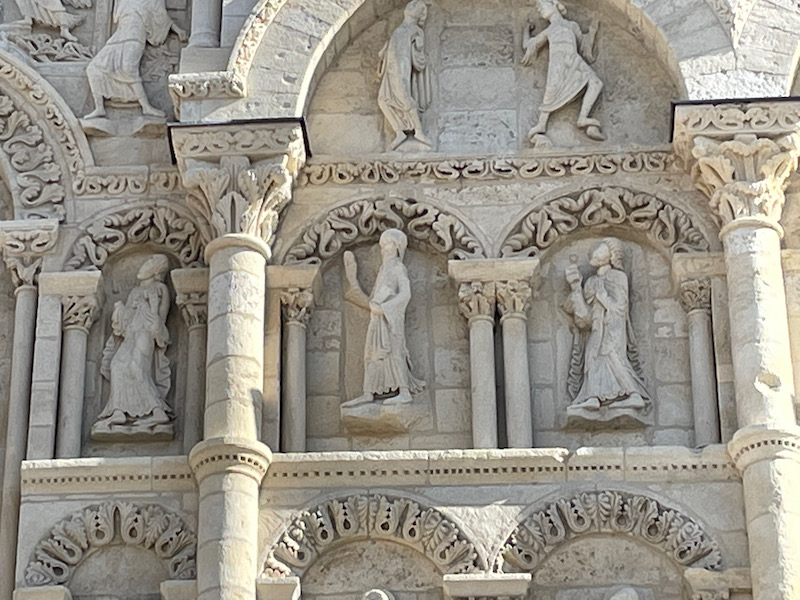
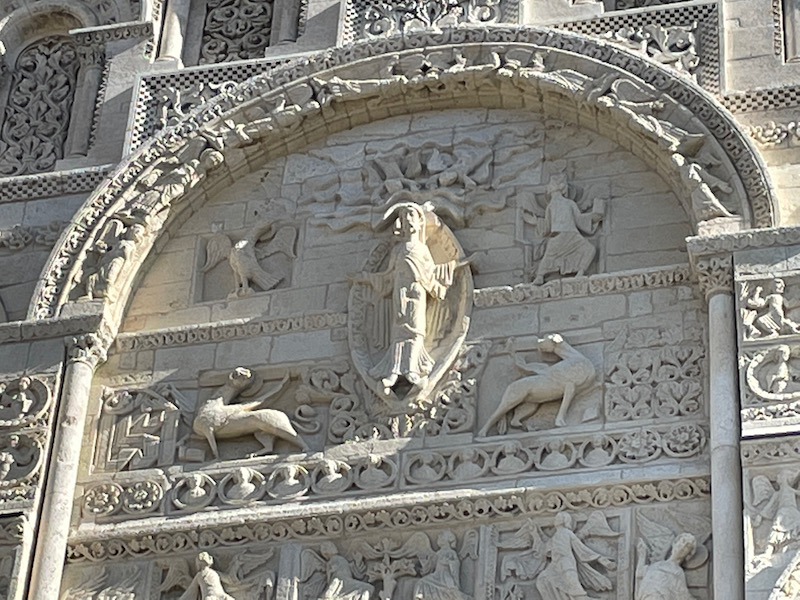
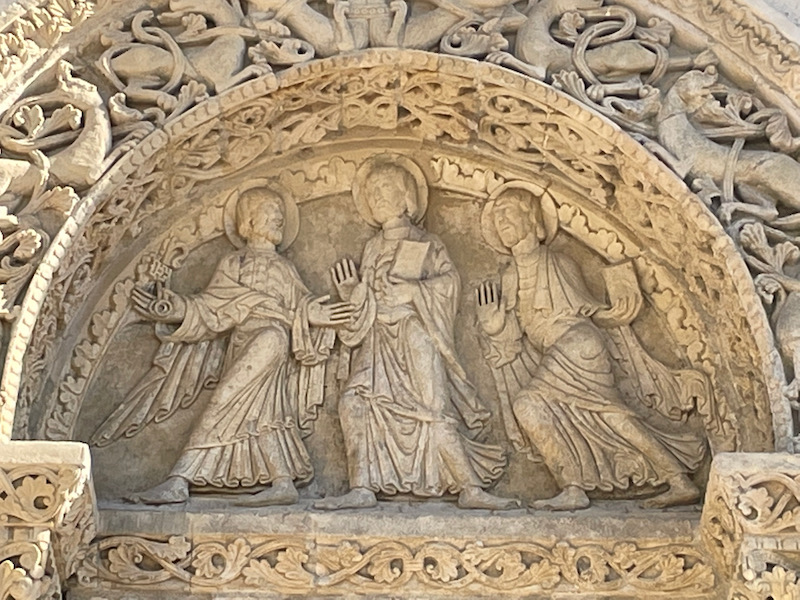
Here are two that I think I got fairly good close-ups of. The first shows Saint Martin sharing his coat with a beggar and the second shows Christ making a blessing with one hand and presenting the Gospels with the other.
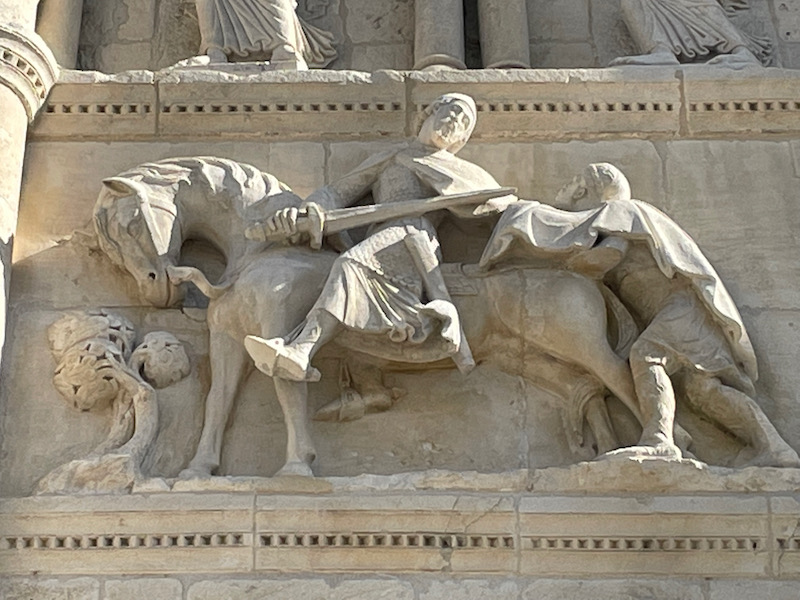
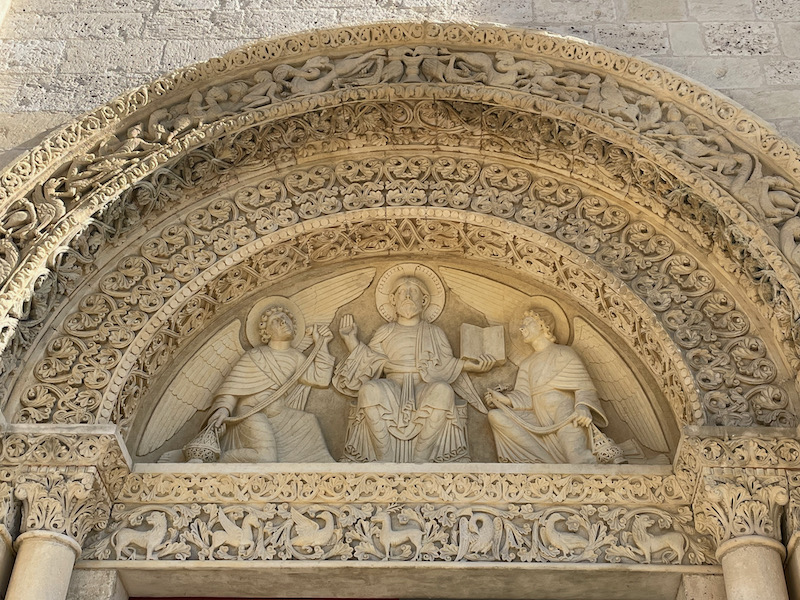
The interior of the nave is covered with three domes (which are difficult to get good pictures of). The walls are pretty bare, but in the various small chapels, there are very nice statues and altars. The main altar , which sits under a large dome and an interesting (and more modern) light, has very nice panels on the front, under a set of Romanesque arches.
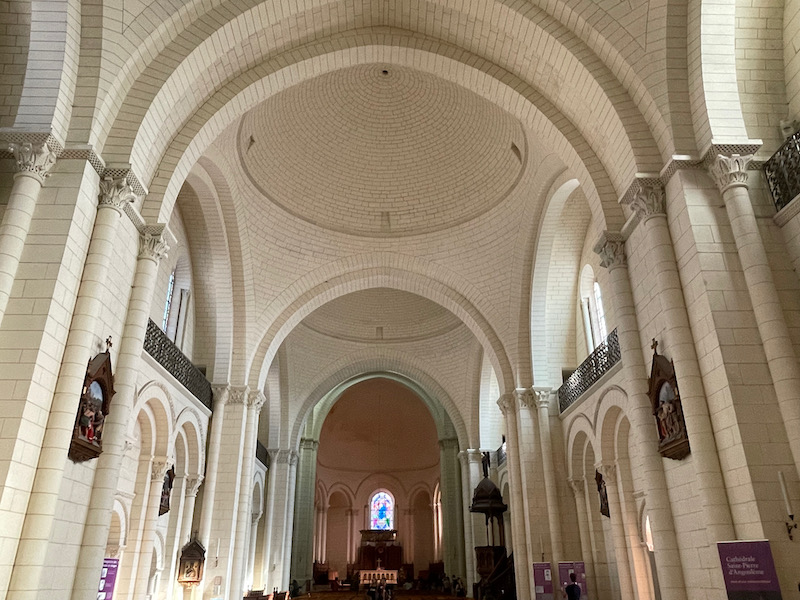
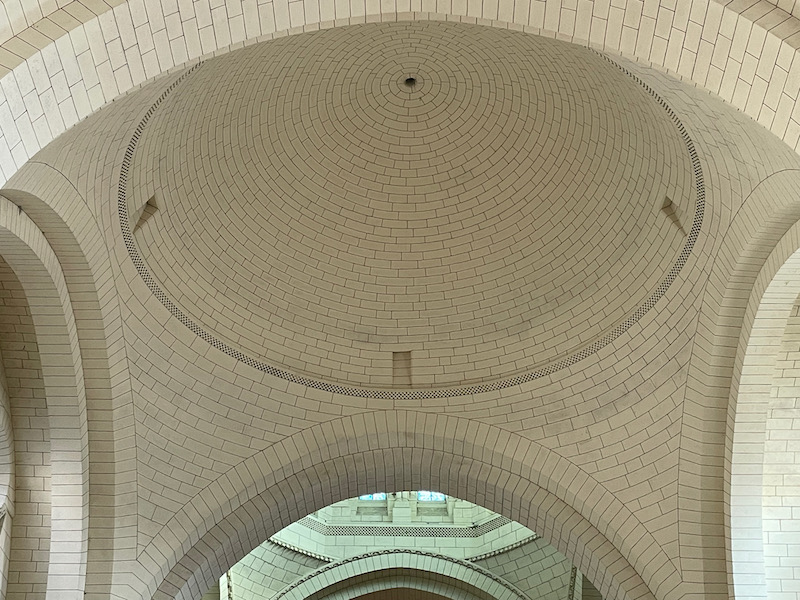
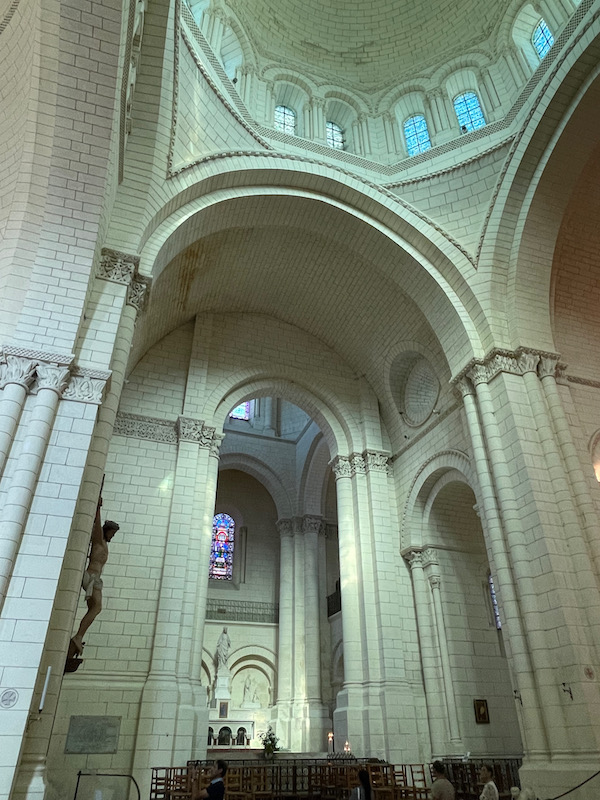
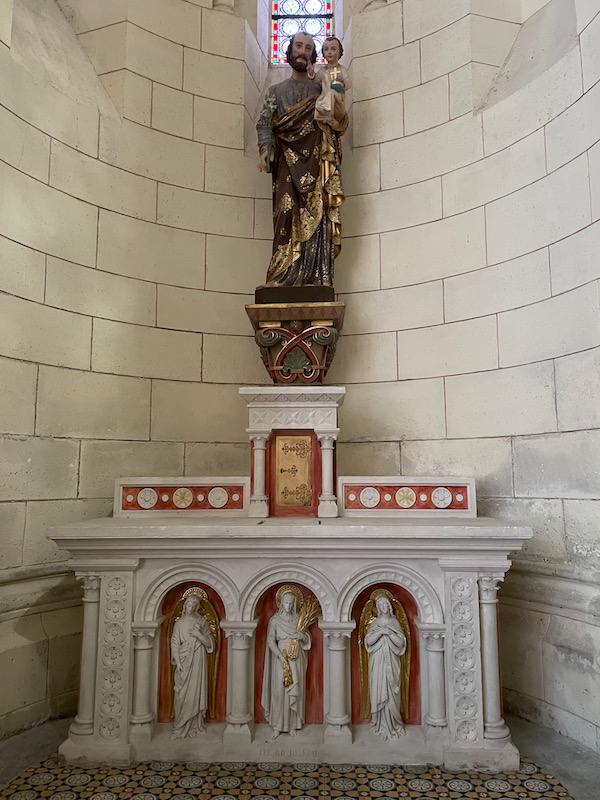
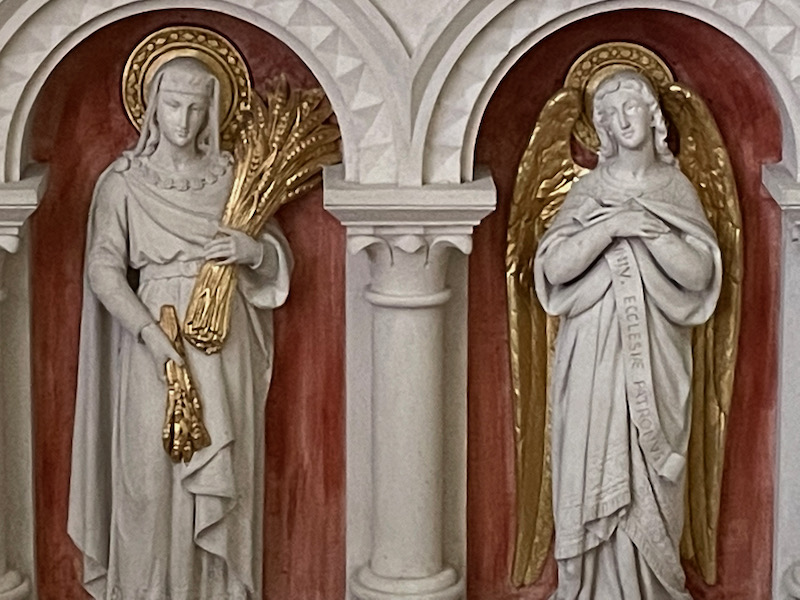
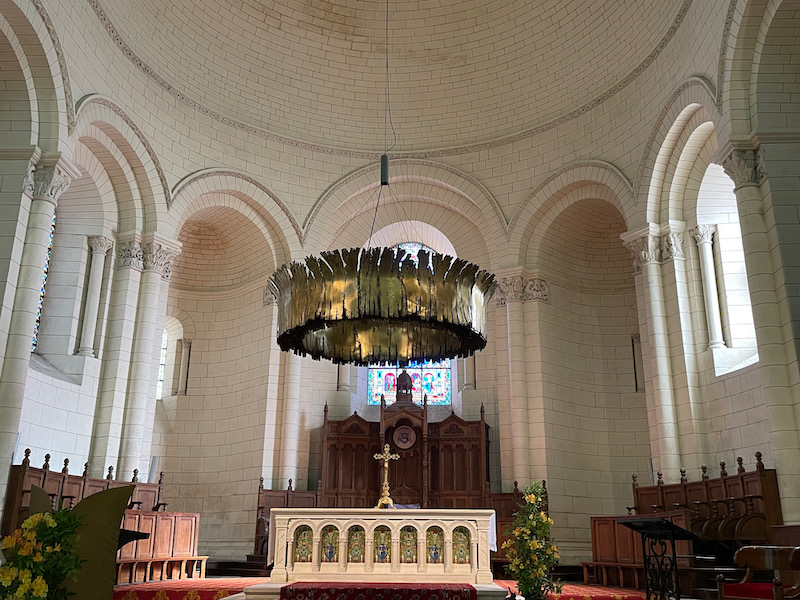
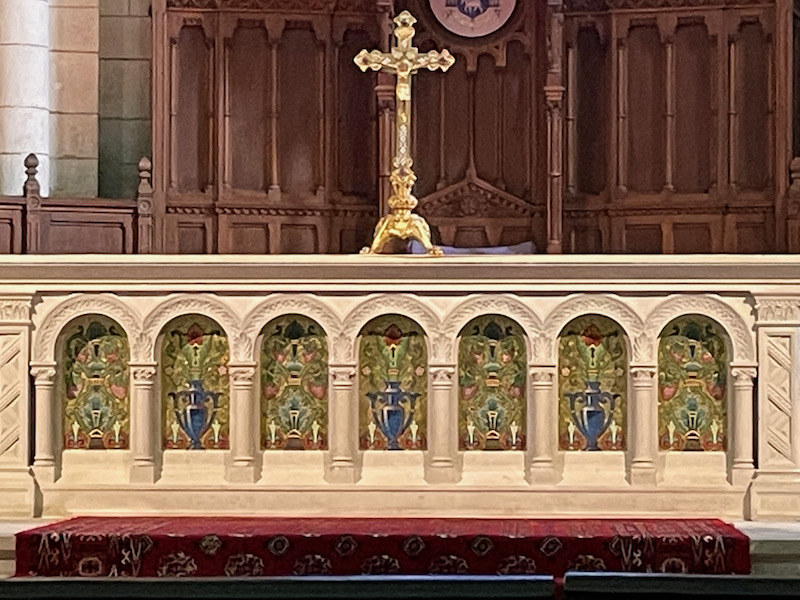
A few more pictures on the outside from different places, including a view of the square tower that sits over the North transept, which is over 160 feet tall. I tried to get a better close-up of the front towers to show the detailed carvings.
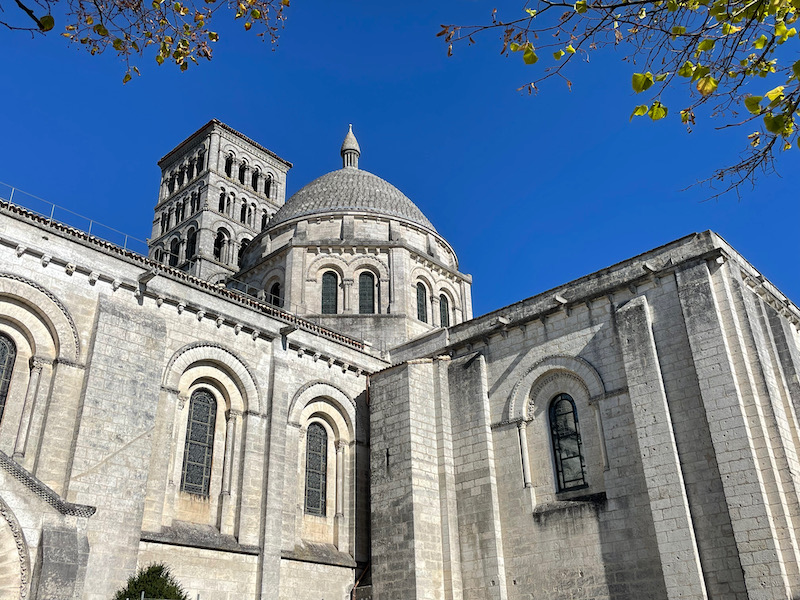
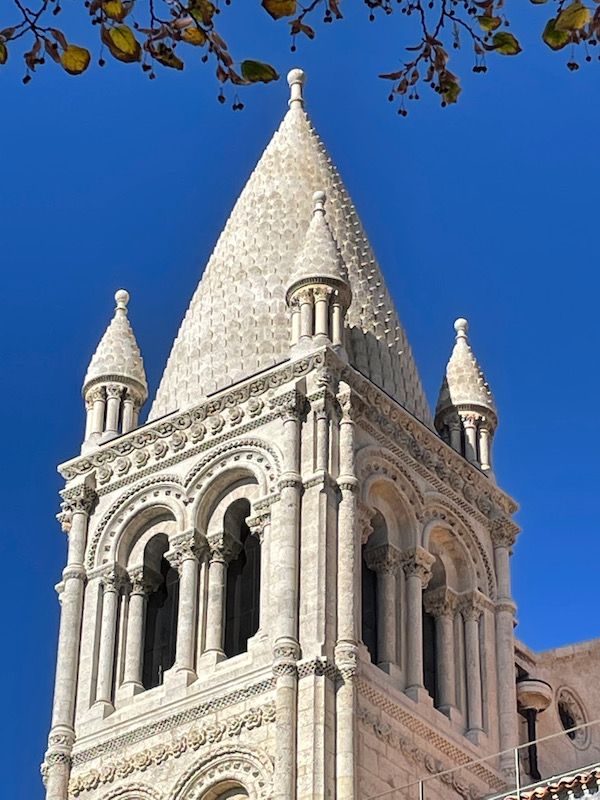
I mentioned that the original town was built on a plateau and the city has now expanded down below, which I tried to get a view of from the plateau.
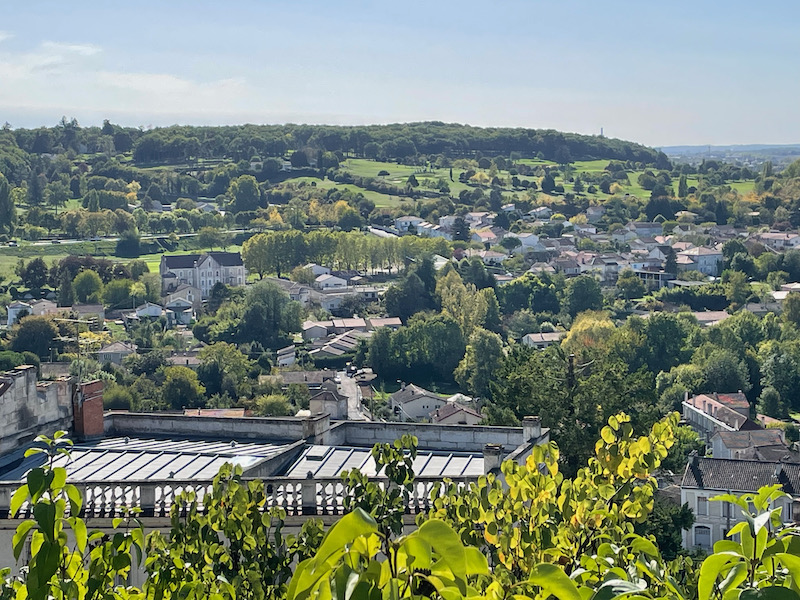
This monument is in memory of Marie François Sadi Carnot, the 5th President of the French Republic. He was reaching the peak of his popularity in 1894 when he was assassinated by an Italian anarchist who called the assassination a political act. About 6 weeks after the funeral at the Panthéon, his assassin was executed. At the top of the monument is a bust of Sadi Carnot. On his left, a winged woman (an allegory of Fame) floats in the air and places a palm leaf and an olive branch in front of him. At the foot of the monument, another allegory, this time France in mourning, barefoot and dressed in the Antique style, who stands with her head veiled, supporting a flag.
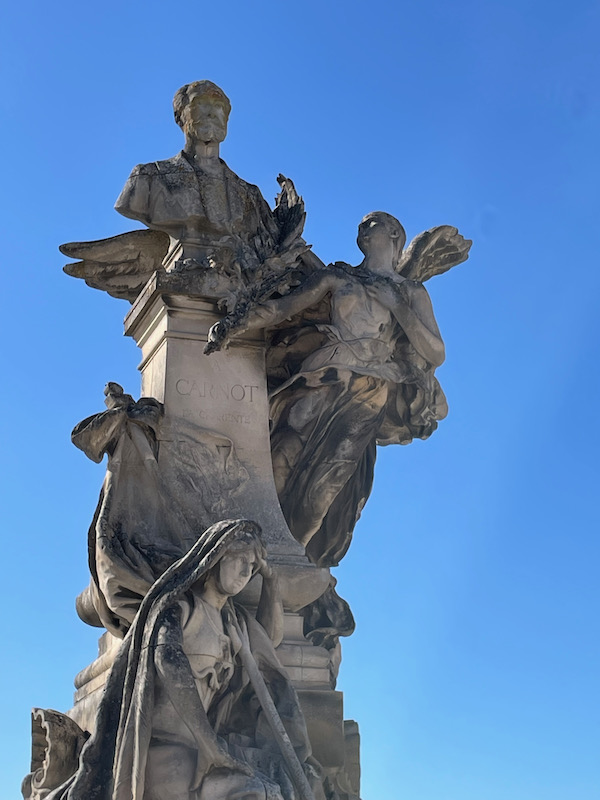
The Théatre d'Angoulême was inaugurated in 1870 after three years of construction. Its façade, preserved during the 1994 renovation, shows sculptures of "La Comédie" et "Le Drame" (Comedy and Drama) above the motto "Castigat ridendo mores" ("Comedy chastises morals through laughter"). Below it, two children represent Dance and Music.
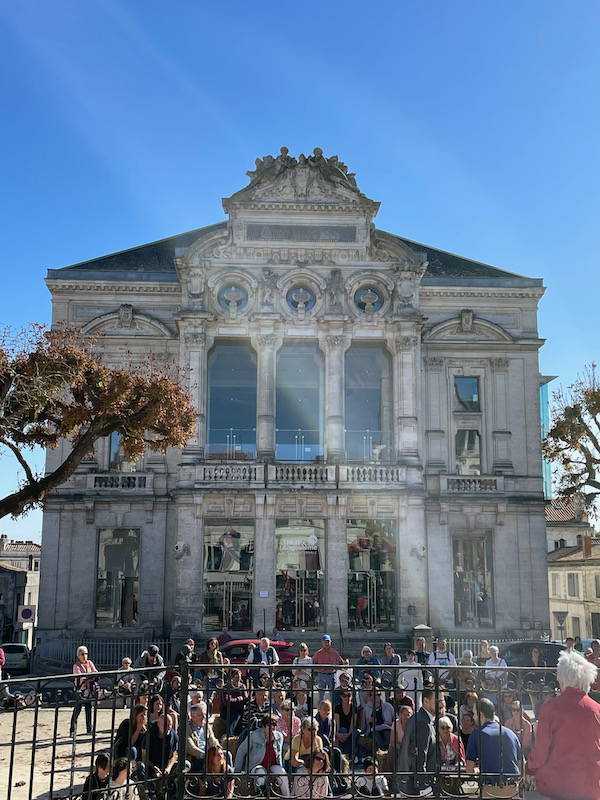
The Town Hall was quite interesting. Originally an old chateau of the Counts of Angoulême from the 13th century, it was modified in the 15th century and then transformed into the Town Hall in 1858. There are 2 of the original towers from the old chateau that you can see in this first picture: a tall polygonal tower from the 13th century (called the Lusignan dungeon, in the center) and the round tower from the 15th century (called the Valois tower, on the left side). It contains museums of paintings and archaeology.
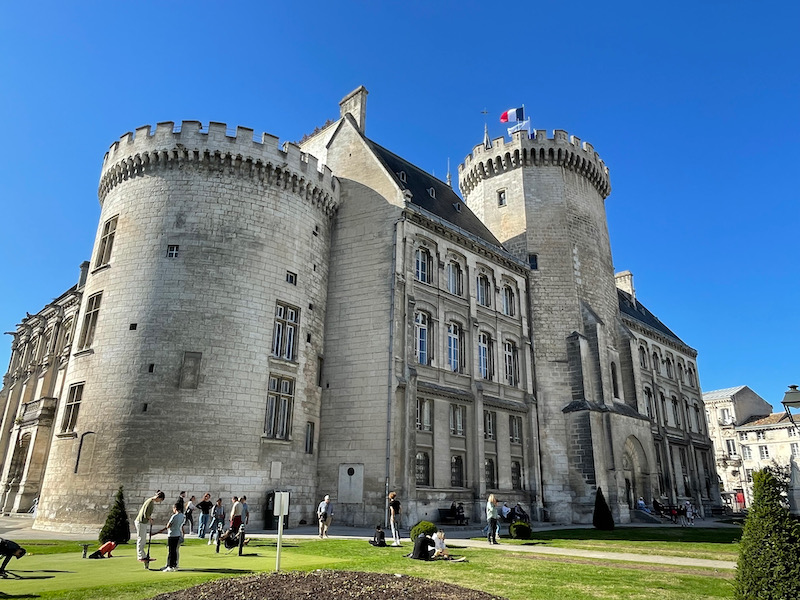
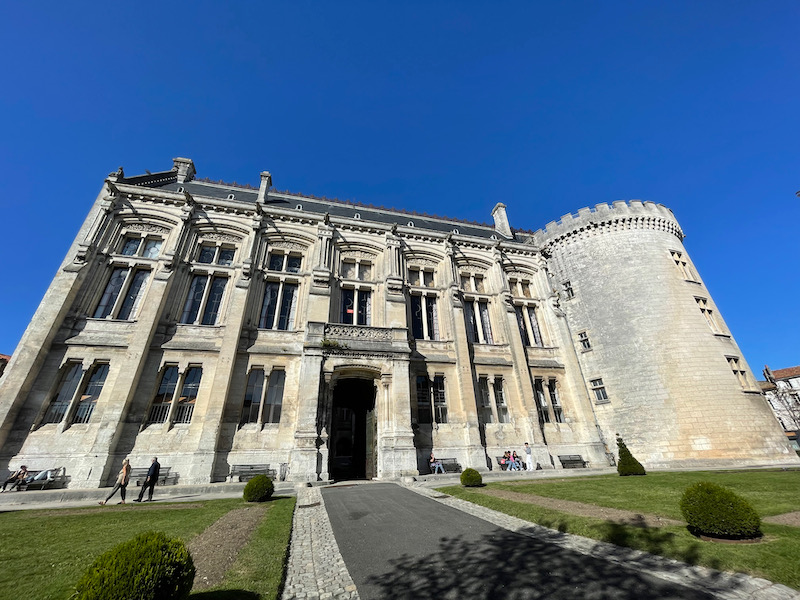
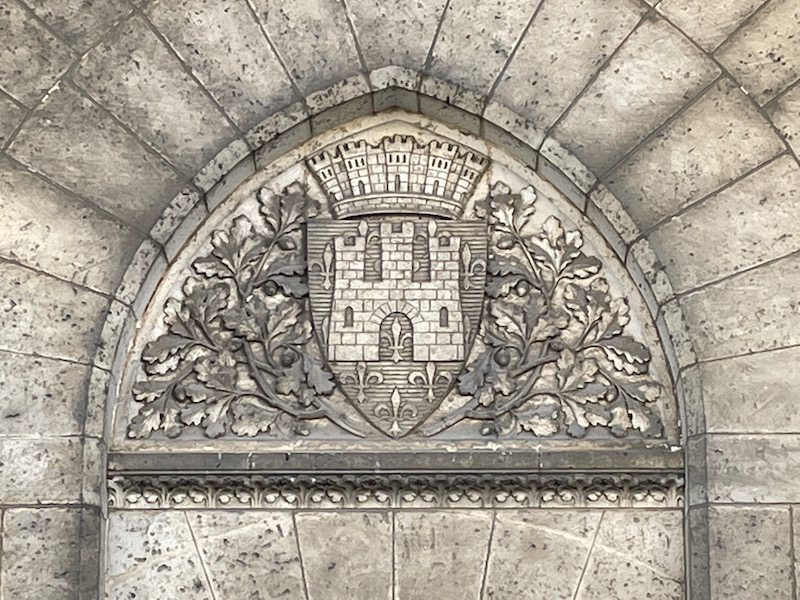
On one of the wings, you can find the Office de Tourism for Angoulême, which to me looks like it may have been an old chapel.
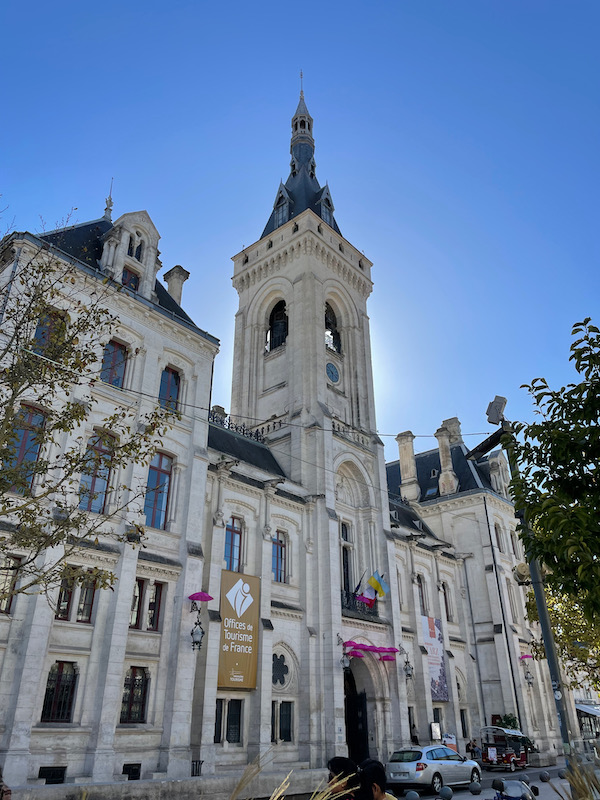
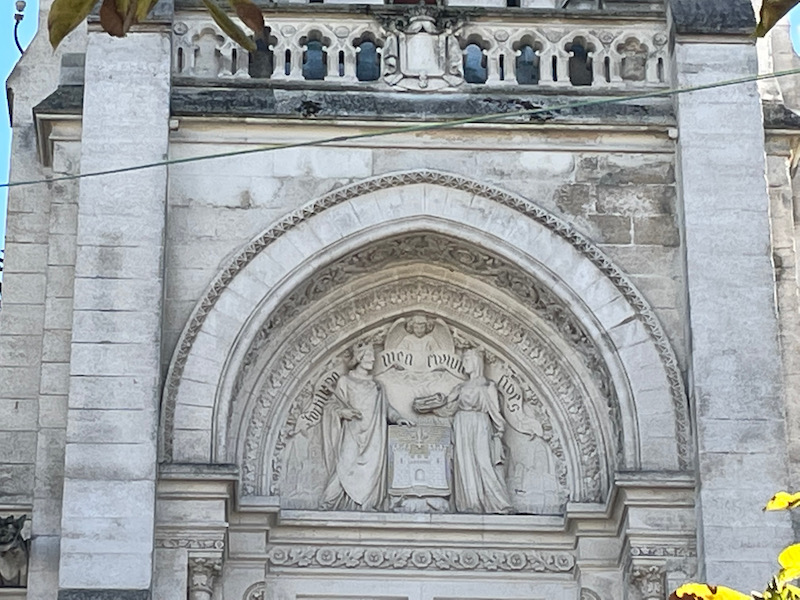
Our last stop was the Eglise Saint-André, which dates from the 12th century and is one of the oldest churches in the city. I really failed miserably getting a good picture from the outside but it really wasn't that interesting, since it only dates from 1825 and is neo-Classical in style.
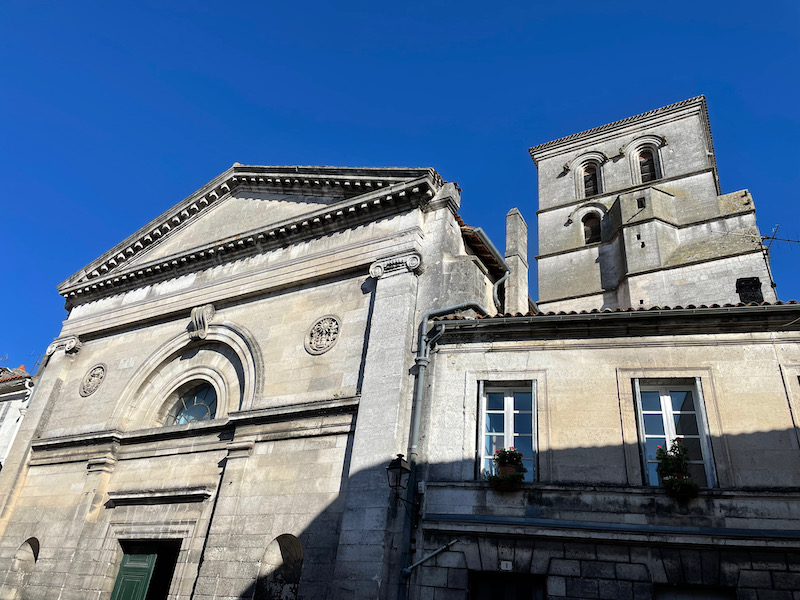
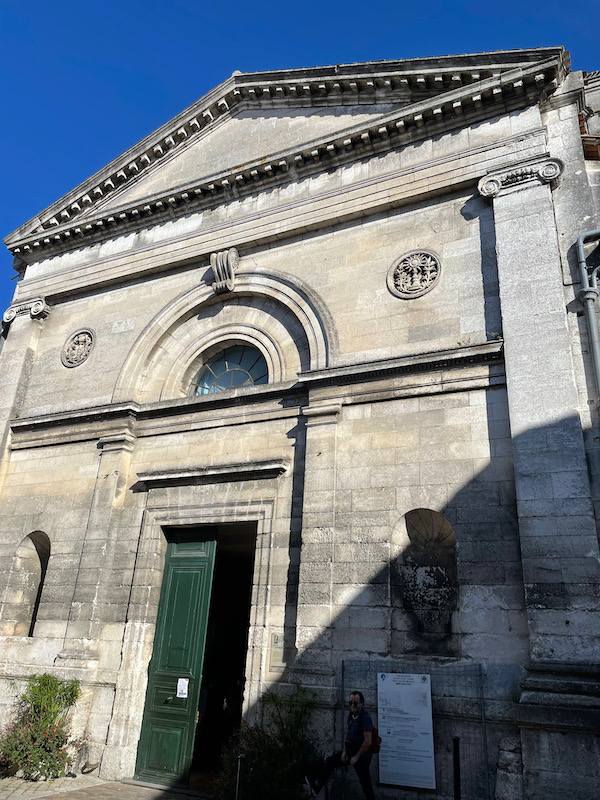
Inside, you can see the nave with 2 side aisles and the tall Gothic arches and vaulted ribs. The baroque carved wooden pulpit that you see on the right side is really beautiful.
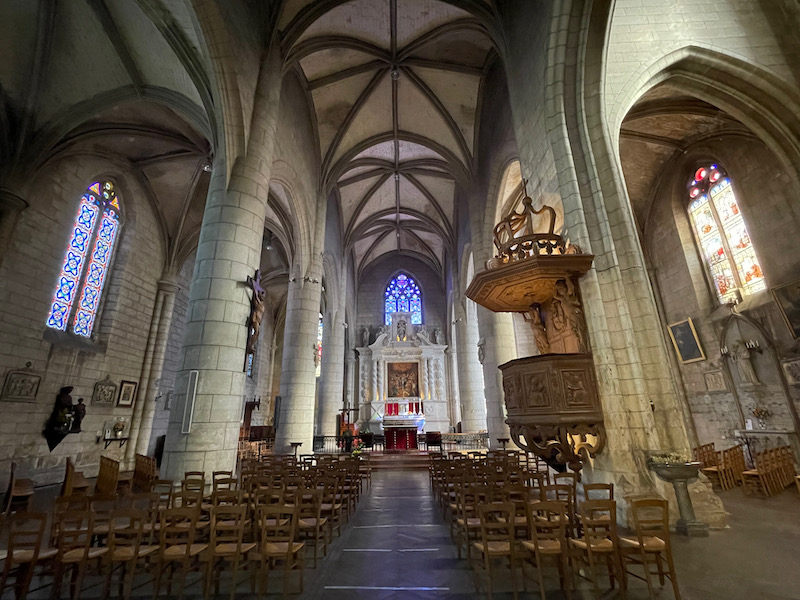
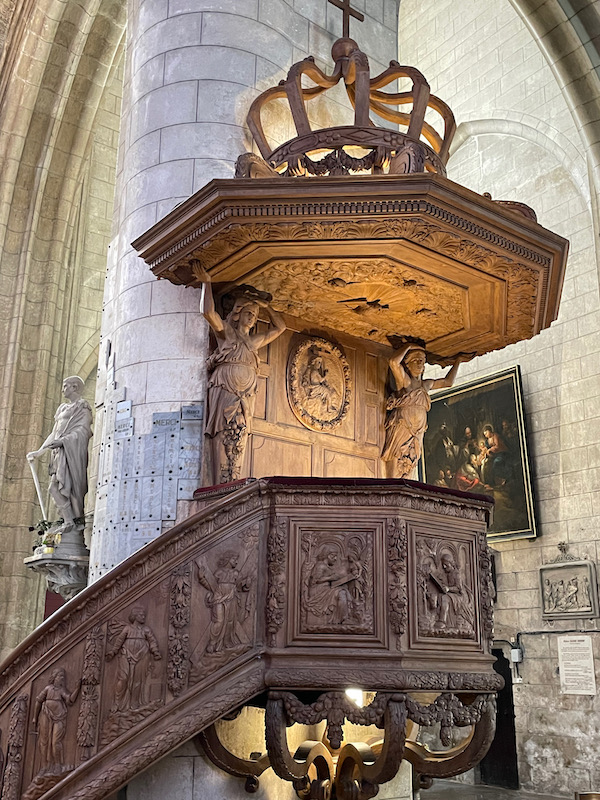
The marble high altar houses the relics of Saint Andrew. A nice example of Baroque art, it is framed by twisted columns, sculpted vine stems, and is adorned at its base with a cross of Saint Andrew and coat of arms of the De Paris de L'Épineuil family.
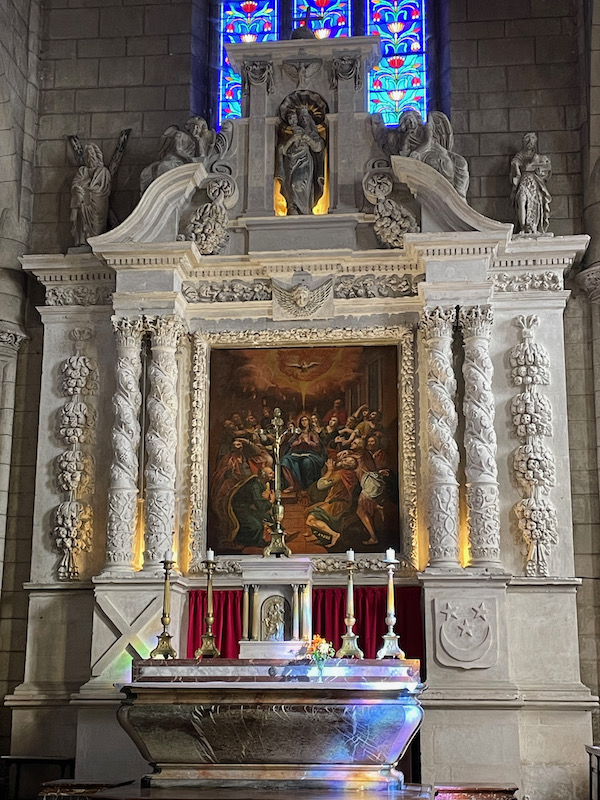
The Chapel of Saint Joseph is covered with frescoes
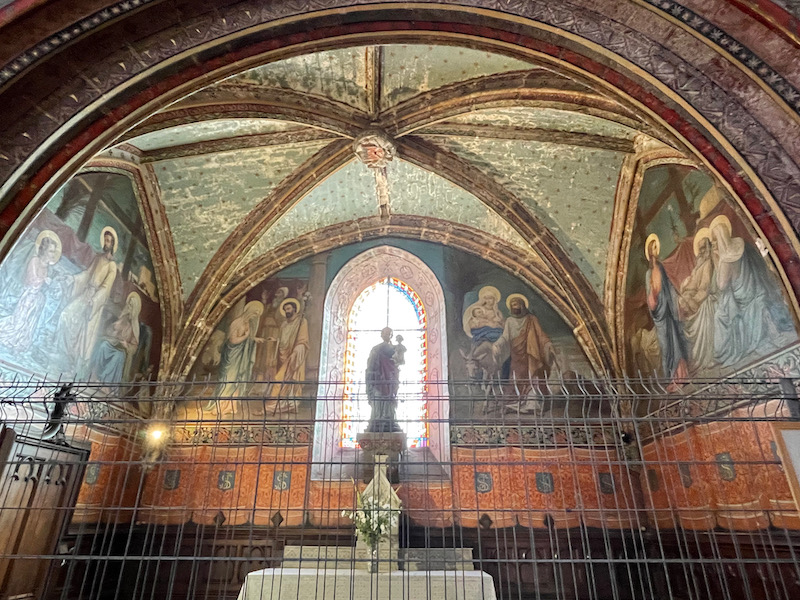
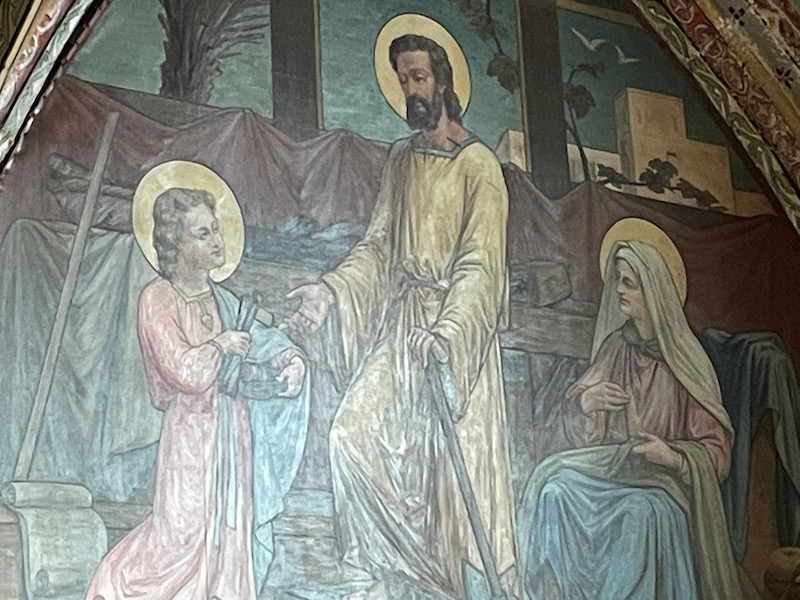
Just one stained-glass window in this blog, which shows the Annunciation.
